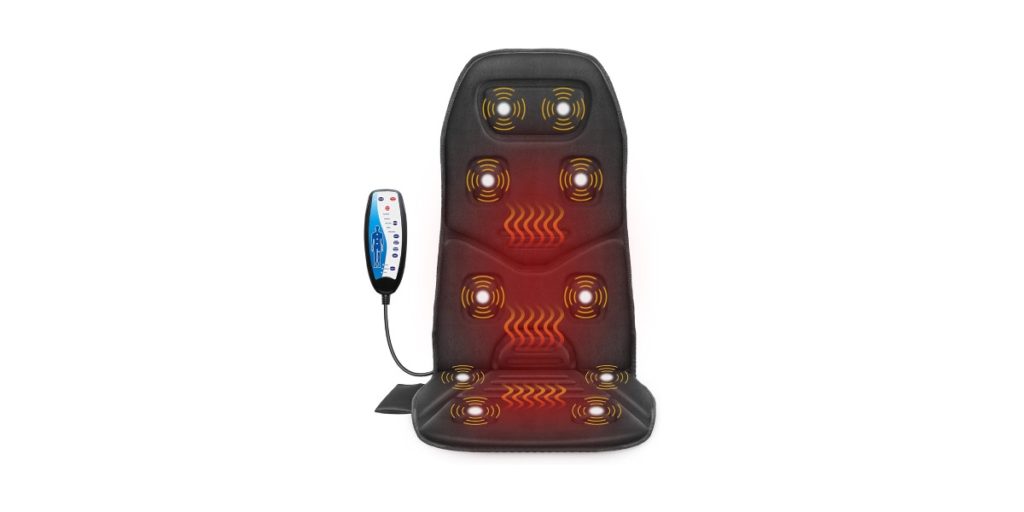To handle road rage and aggressive drivers effectively, start by recognizing aggressive behaviors like tailgating, sudden lane changes, and excessive honking. Identify warning signs such as speeding in heavy traffic, cutting off vehicles, and weaving through cars.
Manage your emotions through deep breathing techniques and positive self-talk to stay calm and focused. Practice defensive driving by maintaining a safe following distance, anticipating other drivers’ actions, and staying proactive. Focus on avoiding confrontations with aggressive drivers by staying level-headed and refraining from retaliatory actions. Remember, staying calm and aware while driving is essential for your safety and others on the road.
Recognizing Aggressive Behavior

When driving, it’s crucial to be alert and observant of behaviors that signal aggression from other drivers. Watch out for tailgating, sudden lane changes, excessive honking, and aggressive gestures, as these are indicators of potential road rage incidents. Recognizing these aggressive driving behaviors early can help you stay safe and react appropriately to prevent escalating situations.
Identifying Aggressive Driving Behaviors
Identifying aggressive driving behaviors is essential for enhancing road safety and preventing potentially dangerous situations on the road. Aggressive behaviors like speeding in heavy traffic, tailgating, cutting off other drivers, running red lights, and weaving through traffic pose significant risks.
Recognizing warning signs such as excessive honking, sudden speed changes, and rude gestures can help you stay vigilant and avoid confrontations with aggressive drivers. Statistics reveal common aggressive actions like tailgating, speeding well over limits, and running red lights. By understanding these behaviors, you can proactively protect yourself and others on the road. Stay alert, practice defensive driving, and report dangerous behavior to authorities to contribute to a safer driving environment for all.
Managing Your Emotions

When dealing with aggressive drivers, it’s important to manage your emotions effectively to avoid escalating the situation. Deep breathing techniques can help you stay calm and focused, while positive self-talk strategies can shift your mindset away from anger triggers. By practicing these emotional management techniques, you can maintain control over your reactions and guarantee a safer driving experience for yourself and others on the road.
Deep Breathing Techniques
Deep breathing techniques serve as a valuable tool for managing your emotions, particularly while driving. When feeling overwhelmed or frustrated on the road, try the following:
- Inhale deeply through your nose, allowing your lungs to fill completely.
- Hold your breath for a few seconds, letting the oxygen circulate within you.
- Slowly exhale through your mouth, releasing any tension or stress you may be holding onto.
These simple yet effective deep breathing exercises can help activate your body’s relaxation response, calm your mind, and reduce anger levels. By incorporating deep breathing into your daily driving routine, you can improve emotional regulation and prevent road rage incidents.
Positive Self-Talk Strategies
Incorporating positive self-talk strategies while driving can greatly enhance your ability to manage emotions and navigate challenging situations like road rage incidents. By using affirmations such as ‘I can stay calm and in control,’ you can reduce stress and anxiety, maintaining composure when faced with aggressive drivers. Research indicates that positive self-talk can boost self-confidence and resilience during road rage confrontations, leading to safer driving behaviors.
Engaging in positive self-talk helps lower levels of anger and aggression, promoting a sense of control and peace on the road. These strategies allow you to reframe negative thoughts and emotions, empowering you to handle aggressive drivers with confidence and composure. Practice positive self-talk to stay calm and focused while dealing with challenging driving situations.
Practicing Defensive Driving
When driving, keeping your focus on the road and staying alert to potential hazards is crucial for practicing defensive driving. Remember to maintain a safe following distance, anticipate the actions of other drivers, and avoid sudden maneuvers that can lead to accidents. By staying calm and aware of your surroundings, you can react proactively to prevent dangerous situations and guarantee a safer driving experience for yourself and others.
Stay Calm and Aware
Staying calm and alert while driving is essential for practicing defensive driving techniques effectively.
- Keep a safe distance from other vehicles to allow for quick reactions.
- Scan your surroundings constantly to anticipate any potential hazards.
- Use your mirrors and signals regularly to communicate with other drivers.
Avoiding Confrontation
When encountering aggressive drivers, it is important to remain calm and composed. Avoid escalating the situation by refraining from retaliatory actions or gestures. Prioritize safety by maintaining distance, staying level-headed, and not engaging in confrontational behavior.
Stay Calm and Composed
To maintain composure and defuse tense situations on the road, employing deep breathing techniques can be highly effective. When faced with aggressive drivers, staying calm is key to avoiding confrontation. Here are some tips to help you stay composed:
- Focus on your breathing: Take slow, deep breaths to center yourself and remain calm.
- Redirect your attention: Listen to soothing music or focus on the scenery around you to distract from the situation.
- Practice positive self-talk: Remind yourself that your safety is a priority and engaging with aggressive drivers is not worth the risk.
Seeking Help When Necessary
When faced with escalating road rage situations, remember that seeking help is a viable option. Utilize emergency hotlines for immediate assistance, consider contacting the police for intervention, or reach out for backup support when necessary. Taking proactive steps to involve authorities or support systems can help diffuse tense situations and guarantee everyone’s safety on the road.
Emergency Hotline Contact
In urgent situations where you encounter aggressive drivers posing a threat, promptly dial the emergency hotline 911 for immediate assistance. When seeking help through the emergency hotline, remember these key points:
- Stay calm and provide your location and details of the aggressive driver’s behavior.
- Follow the operator’s instructions carefully to guarantee your safety and the safety of others on the road.
- Do not engage with the aggressive driver and keep a safe distance until help arrives.
Contacting the emergency hotline is vital in ensuring a swift response to aggressive driving incidents and preventing potential accidents. Remember to save the hotline number for quick access during road rage situations.
Police Assistance Option
Wondering how to swiftly handle aggressive drivers on the road? When faced with a situation where an aggressive driver is endangering your safety, seeking police assistance is an important option. Contacting law enforcement can help de-escalate the confrontation and guarantee your well-being on the road. Reporting aggressive driving incidents to the police not only prevents further dangerous behaviors but also allows for immediate intervention to diffuse the situation. Police intervention is vital in situations where aggressive drivers pose a threat, providing you with the support needed to navigate through challenging road rage encounters effectively. Remember, involving the authorities can help maintain safety on the road and prevent escalation of conflicts with aggressive drivers.
Call for Backup
If faced with a situation involving extreme road rage or aggression, swiftly reaching out for assistance through a 911 call can greatly boost safety measures for yourself and other drivers on the road. In such instances, consider the following:
- Stay Calm: Keep a composed demeanor while explaining the situation to the emergency dispatcher.
- Provide Details: Offer specific information about the aggressive driver, their vehicle, and the location to expedite assistance.
- Follow Instructions: Listen carefully to the dispatcher’s guidance and cooperate with law enforcement to guarantee a swift resolution.
Calling for backup when encountering aggressive behavior can de-escalate tensions, prioritize safety, and deter potential harm on the road.
Developing Patience and Empathy

When faced with challenging driving situations, practicing deep breathing techniques can help you stay calm and focused on the road ahead. Cultivating understanding and compassion towards other drivers can foster a more harmonious driving environment and reduce the likelihood of road rage incidents. By developing patience and empathy, you can not only enhance your driving experience but also contribute to safer roads for everyone.
Practice Deep Breathing
Deep breathing techniques, when practiced regularly, can greatly enhance your patience, empathy, and emotional resilience when dealing with aggressive drivers on the road. This simple yet powerful practice can help you stay calm and composed in challenging situations. Consider the following:
- Inhale deeply through your nose, allowing your lungs to fill with air.
- Hold the breath for a few seconds, feeling the oxygen flow through your body.
- Slowly exhale through your mouth, releasing any tension and stress.
Cultivate Understanding and Compassion
How can cultivating understanding and compassion benefit your interactions with aggressive drivers on the road? Developing patience and empathy allows you to recognize that everyone faces stress and challenges while driving. Understanding the perspective of other drivers can help reduce triggers of anger. By practicing empathy and imagining yourself in the position of other drivers, you contribute to a more peaceful driving atmosphere. Showing compassion towards fellow drivers promotes forgiveness, lowering the chances of conflicts. Acknowledging that mistakes happen on the road and responding with empathy can de-escalate tense situations, preventing road rage incidents. Cultivating these qualities not only benefits your interactions with aggressive drivers but also fosters a sense of unity among all individuals sharing the road.
Conclusion
To sum up, when maneuvering through the perilous waters of road rage and aggressive drivers, remember to steer clear of the storm by employing defensive driving techniques and keeping a level head. Just like a seasoned captain navigating turbulent seas, you can safely sail through any road rage situation with confidence and grace. Stay vigilant, stay calm, and remember that patience and empathy are your best allies on the road to a smoother and more secure driving experience.
Need more tips to be safer on the road? Check out our post on How to be a Safer Trucker now!










